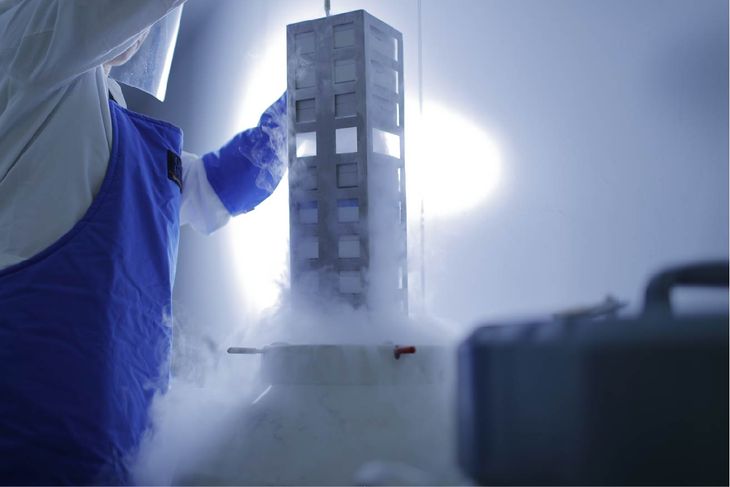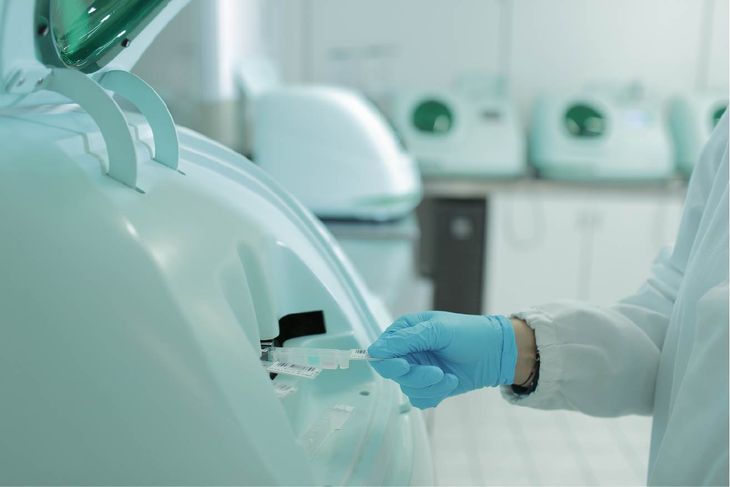Chorus SARS-CoV-2 test on saliva ("diagnostic chewing gum")
Chorus SARS-CoV-2 test on saliva
DIESSE's commitment to the COVID-19 pandemic was born out of the scientific collaboration with the National Institute of Infectious Diseases (INMI) L. Spallanzani which had led to the development and subsequent experimentation and validation in Sierra Leone of 4 kits for the detection of IgG antibodies against the four Ebola virus serotypes (Zaire, Sudan, Bundibuyo and Marbourg). These donated kits were used by INMI researchers in a collaborative project with the Italian NGO EMERGENCY at the "Goderich Surgical Center" in Sierra Leone. The positive development of the EBOLA tests led to the development of diagnostic tests for the detection of IgG, IgA and IgM antibodies to SARS-CoV-2 with INMI.
This collaboration was based on the use of the SARS-CoV-2 Strain "2019-nCoV / Italy- INMI1" isolated in the INMI laboratories in February 2020 as native antigen for the development of the three ELISA kits for the detection of anti-SARS-CoV-2 IgA, IgG and IgM antibodies. The native antigen has been obtained from the virus cultivated, inactivated - through a proprietary and patented protocol - and purified in the BSL3 laboratories of DIESSE. These tests have been developed to provide results "aligned" with the IFA method developed in-house by INMI and used in the serological evaluation of COVID 19 patients. After a thorough evaluation of their performances, the newly developed ELISA kits have replaced the IFA method in the epidemiological surveillance and subsequent diagnosis phase at the INMI Spallanzani.
As the current SARS-CoV-2 pandemic continues, antibody assays are urgently needed for rapid diagnosis, contact tracing and for epidemiological studies. These tests should ideally have high level of sensitivity and specificity, to allow a reliable serological diagnosis, be of simple and secure execution starting from the preanalytical phase to the final result recording and be widely available for mass screening of the population. Saliva has been increasingly used over the last few decades for evaluating human health It is an integrated mixture of secretions of the different salivary glands, gingival crevicular fluid, and mucosal transudates.
The use of saliva has the following advantages:
- It can be collected by the patient, even at home, minimizing the exposure of health care workers to nosocomial infections. This also reduces the need for health care personnel and waiting times for sample collection, resulting in easier crowd control regulations in clinical settings and thus avoiding further virus transmission.
- It is easily accepted by the patients since it is non-painful and non-stressful. Therefore, it can be used for serial samplings and in large scale or epidemiological studies, being especially advantageous in certain populations, such as children.
- It is easy, fast, and cheap to collect, allowing widespread testing.
Standardization of the collection of the saliva sample is of primary importance to obtain a suitable sample, rich in gingival crevicular fluid, whose composition resembles that of serum, and that is richer in antibody compared to the other oral fluids. For this reason, we propose the use of a device composed of a special collection tube and of an absorbing pad. No particular preparation of the patient is required: it is sufficient not to have assumed food or beverages thirty minutes before collection. The absorbing pad has to be kept in the mouth between the gingiva and the cheek for one minute and then it has to be put in the tube, that can be sent to the laboratory. Saliva is stable for five days at room temperature and therefore no particular shipping conditions have to be maintained. Once in the laboratory, the tube is centrifuged for a few minutes and the obtained oral fluid is ready for testing.
The new “Chorus SARS-CoV-2 Screen Test” designed by DIESSE is aimed to the detection of total antibody (mainly IgG and IgA) in saliva. The test, based on the competition method, exploits a human recombinant monoclonal antibody raised against the S1 subunit of the Spike protein conjugated with horseradish peroxidase tracer that is mixed with the saliva sample in the reaction well.
The test's uniqueness is the native antigen. The native antigen, used in solid phase of
the reagent, is obtained from VERO E6 cells infected with the isolated strain 2019-nCoV/Italy-INMI1 through a patented protocol of inactivation and purification in BSL 3 laboratory of DIESSE.
It is performed in complete automation in the Chorus instrument, by means of single test, ready-to-use dedicated devices based on the ELISA method, and the results are obtained in just about 30 minutes. Chorus represents a reliable laboratory solution able to provide quality results, offerin high sensitivity and specificity and efficiency with an easy to use automated method. Moreover, the new test can be easily converted to the common 96 microwells ELISA plate format, compatible to all the automated microplate processors available in the market, thus allowing the screening of a large number of samples.
The test is developed in cooperation with Professor Mario Plebani’s group at the University of Padova, where the validation of the kit using samples from patients atvarious stages of the disease is ongoing.



